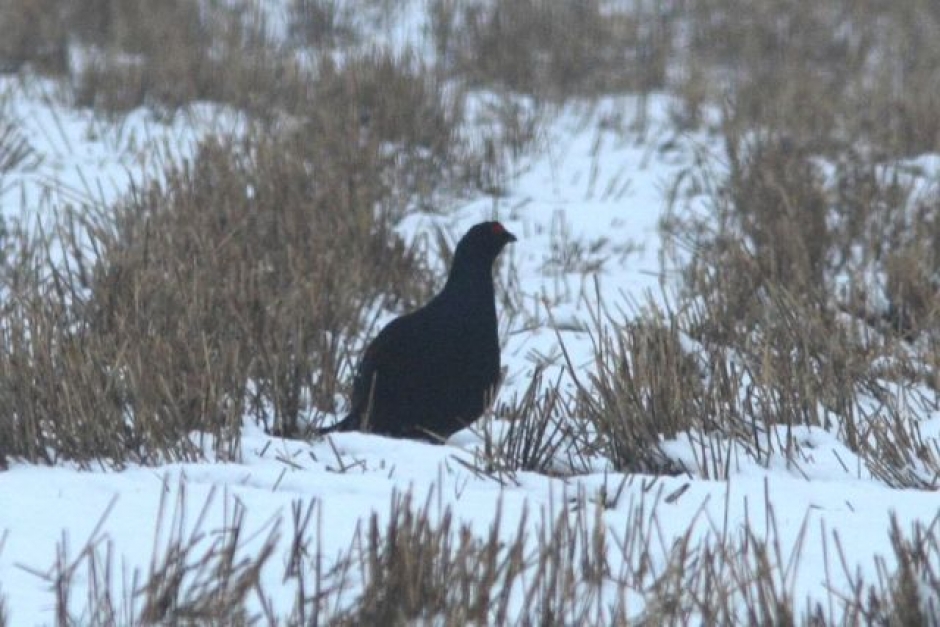Black Grouse
Tetrao tetrix

General information. The black grouse has, like other members of the grouse family, declined in numbers over the past few decades, particularly in the southern parts of Finland. It is fairly easy to observe the species in spring when the cocks exhibit their distinctive mating calls in open areas, such as in moors or farmlands. The black grouse is a protected species under the European Union bird directive. The black grouse is a near threatened species according to Finland’s threat classification system.
- Length male 53 cm, female 40 cm
- Builds a nest on the ground, under the cover of spruce tree branches or other types of vegetation
- Sedentary species
- Main food sources are buds, shoots, leaves, grass and berries
Habitat. The Eurasian coniferous forest belt is home to the hazel grouse. This species thrives at the edges of forests, near open areas such as moors and farmlands. It can be found in both deciduous as well as coniferous forests.
Distribution in Vaasa. Observations indicating the nesting black grouse were made in a total of 75 survey blocks. Vast forests and forested islands are where this bird thrives most successfully. Distribution map is not published due to species protection reasons.
